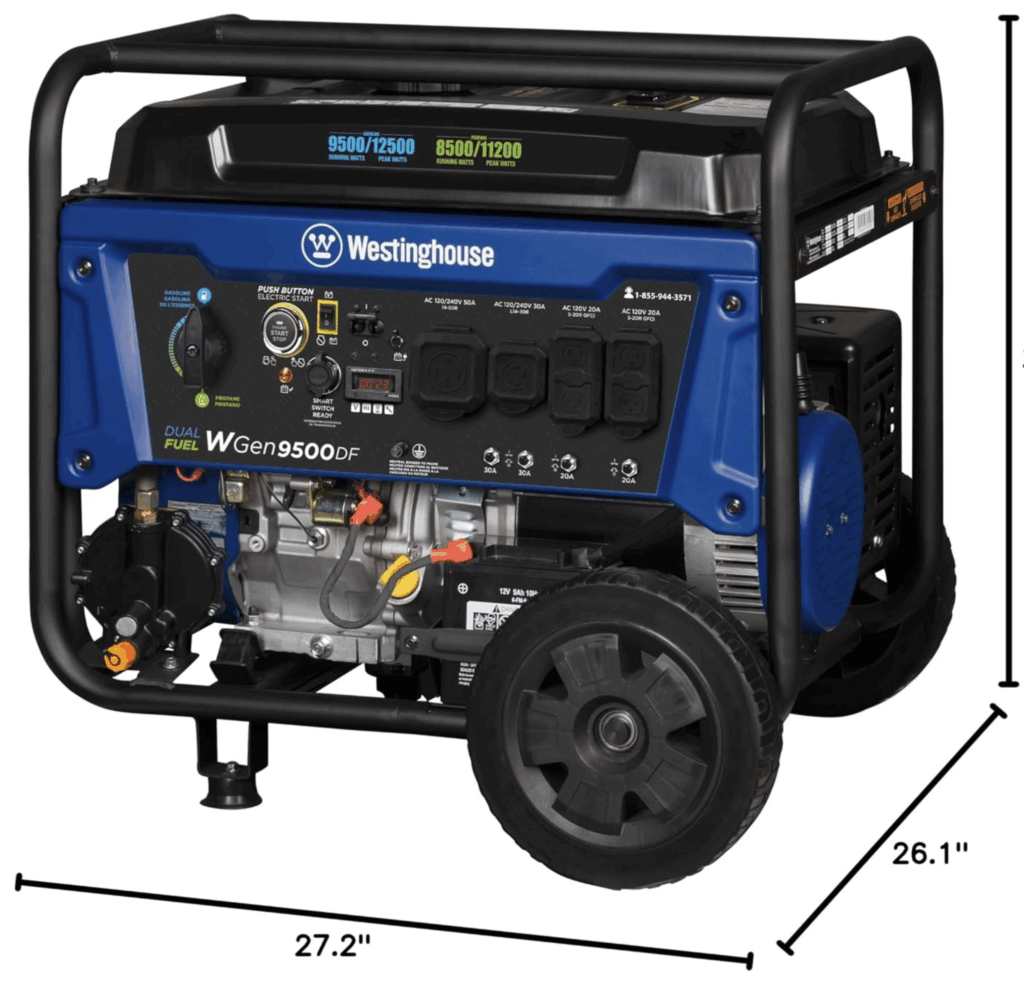When disaster strikes, the last thing you want to realize is that your only backup power source has failed. In emergency preparedness, one of the golden rules is redundancy: always have more than one way to meet a critical need. Power is no exception.
Whether you’re facing down a windstorm, wildfire evacuation, or a weeklong blackout after a blizzard, electricity powers your essentials—refrigeration, lighting, phone charging, radios, even life-saving medical devices.
⚡ Why One Power Source Isn’t Enough
🚨 Emergency Tip of the Day: Prepare for Power Outages
Too often, people prepare by buying a single generator or solar power bank and call it good. But in real-world emergencies:
- Gas runs out
- Solar doesn’t charge during storms
- Generators break down
- Batteries die faster in the cold
- And sometimes, equipment just fails
If you don’t have a backup for your backup, you’re risking a single point of failure—which could mean food spoilage, communication loss, or worse.
🔌 Smart Backup Power Strategy: Diversify Your Sources
The key is to layer your power solutions across different fuel types, technologies, and capacities. Here’s a practical hierarchy to consider:
1. Solar Power Bank or Charger
- Great for phones, flashlights, radios
- Never runs out of fuel
- Works well during sunny conditions but slow to charge in bad weather
2. Portable Power Station (Battery Bank)
- Rechargeable lithium units like Jackery, Goal Zero, or EcoFlow
- Can power laptops, CPAPs, fans, even a mini fridge
- Quiet and safe for indoor use
3. Gas or Dual-Fuel Generator
- Still the most reliable high-output option for refrigerators, freezers, and power tools
- Must be used outdoors with proper ventilation
- Requires fuel storage and regular maintenance (more below)
4. Vehicle Power (12V Inverter)
- Use your car’s battery to run small devices via an inverter
- Useful in a pinch when other options are depleted
- Keep a heavy-duty inverter in your trunk
5. Hand-Crank or Pedal Generator
- Great last-resort backup
- Provides limited power (but enough for communication gear or lights)
- Never runs out of power—as long as you keep moving
🔧 Keeping Your Generator Running When You Need It Most
A neglected generator is just a heavy, expensive paperweight. Here are tips to ensure your generator is always ready for action:
✅ 1. Run It Monthly
Start it up for 5–10 minutes at least once a month. This circulates oil and prevents seals from drying out.

✅ 2. Use Fuel Stabilizer
Gasoline goes bad in as little as 3 months. Add a stabilizer like Sta-Bil to keep stored fuel fresh for up to 2 years.
✅ 3. Store Fuel Safely
- Keep 5–10 gallons minimum in approved containers
- Store fuel in a cool, dry, ventilated location
- Label cans with purchase dates and rotate stock
✅ 4. Change the Oil Regularly
After every 20–50 hours of use, or annually if unused. Dirty oil causes premature engine wear.
✅ 5. Test Under Load
Plug in actual devices (like a small heater or fridge) during test runs. This simulates real-world use and helps you detect issues.
✅ 6. Keep Spare Parts
Store an extra spark plug, air filter, oil, and tools with your generator. During a disaster, replacement parts may not be available.
✅ 7. Check Cords & Safety
Use outdoor-rated, heavy-gauge extension cords. Keep cords off the ground and away from water.
🧠 In Summary
Emergencies don’t wait for you to be ready. One power source is not a plan—it’s a gamble. By building in redundancy and keeping your gear maintained, you’ll ensure your lights stay on, your phone stays charged, and your food stays cold no matter how long the grid stays down.
🛠 Bonus Tip:
Label all your power gear (generators, cords, batteries) with setup instructions and test dates. In a high-stress situation, even simple tasks become harder—make it easy for anyone in your household to get power flowing fast.


